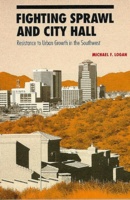The University of Arizona Press is the premier publisher of academic, regional, and literary works in the state of Arizona. They disseminate ideas and knowledge of lasting value that enrich understanding, inspire curiosity, and enlighten readers. They advance the University of Arizona’s mission by connecting scholarship and creative expression to readers worldwide.
Festival of the Poor
Fertility Decline and the Ideology of Class
Paths of Life
Within these pages are living portraits of fifteen Native American groups of Arizona and northern Mexico. The Navajos, the Western Apaches, the Hualapais, Yavapais, and Havasupais, the Yaquis, the O'odham, the Tarahumaras, the Southern Paiutes, the Seris, the Colorado River Yumans--Quechan, Mohaves, Cocopas, and Maricopas--and the Hopis. Literally and figuratively, the paths they walk are the same paths walked by their ancestors, going back hundreds and even thousands of years.
Through history, most of these groups have seen their homelands conquered by outside military forces and their people scattered far and wide. Yet, despite years of exile and subjugation, they have all kept alive their cultures, their sense of being a people. This book explores the symbols, rituals, and words that have ensured continuity and that distinguish each group from others. Equally important, Paths of Life describes the dynamic changes that are occurring in each group as new ideas are incorporated into traditional ways of life.
The book focuses on one major cultural theme for each group. The chapter on the Navajos, for example, illustrates how the work of sheepherding reinforces the Diné way of relating to one another and living off the land, while the chapter on the Yaquis examines how Catholic and Native rituals have become fused into a uniquely meaningful Yaqui religion. Throughout the book, the guidance and advice of respected Indian scholars have ensured both accuracy and authenticity.
The pages in this volume are filled with individuals like Victoriano Churro, "a man who ran like a deer," and artist Grace Mitchell: "I'm going to weave a basket. I'll gather mulberry shoots, split them and roll them . . . " There are glimpses of the Yaqui flower world, "Wilderness world / flower freely, is blowing, / wilderness world," and the Seri creation myth, "Slender whirlwinds coming from the sky touch the land. / Sounds of arrows / striking the ground, / roaring, / raising dust clouds." Here also are Father Sun and Mother Moon, Rock Crystal Boy and Yellow Corn Girl, Spider Woman, Wolf, and of course Coyote.
Among the many books written about these groups, Paths of Life is rare for its breadth of information. The book includes dozens of photographs, both color and black-and-white, as well as a number of short asides, which discuss special points of interest. Readers in search of even more information will appreciate a carefully selected list of suggested additional reading. Encompassing anthropology, history, Native American cultures, arts, and folklore, at heart this is a book for anyone--teacher, student, armchair traveler, general reader--whose imagination has been captured by the lands and peoples of the Greater Southwest.
Historic Zuni Architecture and Society
An Archaeological Application of Space Syntax
Chicanas/Chicanos at the Crossroads
Social, Economic, and Political Change
Paths of Life
American Indians of the Southwest and Northern Mexico
Orioles, Blackbirds, and Their Kin
A Natural History
Environmentalism and Economic Justice
Two Chicano Struggles in the Southwest
A Place Called Grand Canyon
For most people, "Grand Canyon" signifies that place of scenic wonder identified with Grand Canyon National Park. Beyond the boundaries of the park, however, extends the greater Grand Canyon, a region that includes five Indian reservations, numerous human settlements, and lands managed by three federal agencies and by the states of ...
A Place Called Grand Canyon
For most people, "Grand Canyon" signifies that place of scenic wonder identified with Grand Canyon National Park. Beyond the boundaries of the park, however, extends the greater Grand Canyon, a region that includes five Indian reservations, numerous human settlements, and lands managed by three federal agencies and by the states of Arizona and Utah. Many people have sought to etch their values, economic practices, and physical presence on this vast expanse. Ultimately, all have had to come to terms with the limits imposed by the physical environment and the constraints posed by others seeking to carve out a place for themselves.
A Place Called Grand Canyon is an unprecedented survey of how the lands and resources of the greater Grand Canyon have come to be divided in many different ways and for many different reasons. It chronicles the ebb and flow of power --changes in who controls the land and gives it meaning. The book begins with an exploration of the geographies of the native peoples, then examines how the westward expansion of the United States affected their lives and lands. It traces the century of contest and negotiation over the land and its resources that began in the 1880s and concludes with an assessment of contemporary efforts to redefine the region. Along the way, it explores how the spaces of the greater Grand Canyon area came to be defined and used, and how those spaces in turn influenced later contests among the ranchers, loggers, miners, recreationists, preservationists, Native Americans, and others claiming a piece--or all--of the area for their own ends. The story exposes how dynamic the geographical boundaries of the region really are, regardless of the indelibility of the ink with which they were drawn.
With visitation to Grand Canyon National Park approaching five million people per year, pressures on resources are intensifying. When the greater Grand Canyon area is considered, environmental management is further complicated by the often-conflicting demands of business, recreation, ecological preservation, and human settlement. Morehouse invites us to look beyond boundaries drawn on maps to discover what Grand Canyon means to different people, and to think more deeply about what living in harmony with the land really entails. Her insights will be of interest to geographers and other social scientists--including anthropologists and environmental historians--and to all who seek a counterpoint to conventional natural histories of the region.
Thread of Blood
Colonialism, Revolution, and Gender on Mexico's Northern Frontier
Of Marshes and Maize
Preceramic Agricultural Settlement in the Cienega Valley, Southeastern Arizona
Becoming and Remaining a People
Native American Religions on the Northern Plains
Answered Prayers
When Catholics in the Southwest ask God or a saint for help, many of them do not merely pray. They also promise or present a gifta tiny metal object known as a milagro. A milagro, which means "miracle" in Spanish, depicts the object for which a miracle is sought, such as a crippled leg or a new house. Milagros are offered for ...
The Metropolitan Frontier
Cities in the Modern American West
Sonoran Desert Plants
The Sonoran Desert, a fragile ecosystem, is under ever-increasing pressure from a burgeoning human population. This ecological atlas of the region's plants, a greatly enlarged and full revised version of the original 1972 atlas, will be an invaluable resource for plant ecologists, botanists, geographers, and other scientists, and for all with a serious interest in living with and protecting a unique natural southwestern heritage.
An encyclopedia as well as an atlas, this monumental work describes the taxonomy, geographic distribution, and ecology of 339 plants, most of them common and characteristic trees, shrubs, or succulants. Also included is valuable information on natural history and ethnobotanical, commercial, and horticultural uses of these plants. The entry for each species includes a range map, an elevational profile, and a narrative account. The authors also include an extensive bibliography, referring the reader to the latest research and numerous references of historical importance, with a glossary to aid the general reader.
Sonoran Desert Plants is a monumental work, unlikely to be superseded in the next generation. As the region continues to attract more people, there will be an increasingly urgent need for basic knowledge of plant species as a guide for creative and sustainable habitation of the area. This book will stand as a landmark resource for many years to come.
Gender and Agricultural Development
Surveying the Field
Fighting Sprawl and City Hall
Resistance to Urban Growth in the Southwest
Letters from Wupatki
Downcanyon
A Naturalist Explores the Colorado River through the Grand Canyon
Ambivalent Journey
U.S. Migration and Economic Mobility in North-Central Mexico
Women Singing in the Snow
This first book-length analysis of the Chicana literary tradition traces the development of Chicana literature from 1848 to the present. Rebolledo discusses major writers' works, important myths and archetypes, and key theoretical issues; she then shows the ways in which Chicana writers explore subjectivity and identity in their writing, the struggle Chicana writers have faced in finding their voices and developing a strong and ethnically tagged language, and the ways they have broken taboos by transgressing into traditionally male spaces.
Between the Lines
Letters Between Undocumented Mexican and Latin American Immigrants and Their Families and Friends
Women Singing in the Snow
This first book-length analysis of the Chicana literary tradition traces the development of Chicana literature from 1848 to the present. Rebolledo discusses major writers' works, important myths and archetypes, and key theoretical issues; she then shows the ways in which Chicana writers explore subjectivity and identity in their writing, the struggle Chicana writers have faced in finding their voices and developing a strong and ethnically tagged language, and the ways they have broken taboos by transgressing into traditionally male spaces.
Ocean Power
The annual seasons and rhythms of the desert are a dance of clouds, wind, rain, and floodwater in it roles from bringer of food to destroyer of life. The critical importance of weather and climate to native desert peoples is reflected with grace and power in this personal collection of poems, the first written creative work by an individual in O'odham and a landmark in Native American literature.
Poet Ofelia Zepeda centers these poems on her own experiences growing up in a Tohono O'odham family, where desert climate profoundly influenced daily life, and on her perceptions as a contemporary Tohono O'odham woman. One section of poems deals with contemporary life, personal history, and the meeting of old and new ways. Another section deals with winter and human responses to light and air. The final group of poems focuses on the nature of women, the ocean, and the way the past relationship of the O'odham with the ocean may still inform present day experience. These fine poems will give the outside reader a rich insight into the daily life of the Tohono O'odham people.
Home Places
Contemporary Native American Writing from Sun Tracks
Sahel Visions
Planned Settlement and River Blindness Control in Burkina Faso
Evolutionary Archaeology
Methodological Issues
Those of Little Note
Gender, Race, and Class in Historical Archaeology
Risky Rivers
The Economics and Politics of Floodplain Farming in Amazonia
Women of the Mexican Countryside, 1850-1990
Creating Spaces, Shaping Transitions
Women of the Mexican Countryside, 1850-1990
Too often in the history of Mexico, women have been portrayed as marginal figures rather than legitimate participants in social processes. As the twentieth century draws to a close, Mexican women of the countryside can be seen as true historical actors: mothers and heads of households, factory and field workers, community activists, artisans, and merchants. In this new book, thirteen contributions by historians, anthropologists, and sociologists--from Mexico as well as the United States--elucidate the roles of women and changing gender relations in Mexico as rural families negotiated the transition from an agrarian to an industrial society.
Drawing on Mexican community studies, gender studies, and rural studies, these essays overturn the stereotypes of Mexican peasant women by exploring the complexity of their lives and roles and examining how these have changed over time. The book emphasizes the active roles of women in the periods of civil war, 1854-76, and the commercialization of agriculture, 1880-1910. It highlights their vigorous responses to the violence of revolution, their increased mobility, and their interaction with state reforms in the period from 1910 to 1940. The final essays focus on changing gender relations in the countryside under the impact of rapid urbanization and industrialization since 1940.
Because histories of Latin American women have heretofore neglected rural areas, this volume will serve as a touchstone for all who would better understand women's lives in a region of increasing international economic importance. Women of the Mexican Countryside demonstrates that, contrary to the peasant stereotype, these women have accepted complex roles to meet constantly changing situations.
CONTENTS
IWomen and Agriculture in Nineteenth-Century Mexico
1. Exploring the Origins of Democratic Patriarchy in Mexico: Gender and Popular Resistance in the Puebla Highlands, 1850-1876, Florencia Mallon
2. "Cheaper Than Machines": Women and Agriculture in Porfirian Oaxaca (1880-1911), Francie R. Chassen-López
3. Gender, Work, and Coffee in C¢rdoba, Veracruz, 1850-1910, Heather Fowler-Salamini
4. Gender, Bridewealth, and Marriage: Social Reproduction of Peons on Henequen Haciendas in Yucatán (1870-1901), Piedad Peniche Rivero
IIRural Women and Revolution in Mexico
5. The Soldadera in the Mexican Revolution: War and Men's Illusions, Elizabeth Salas
6. Rural Women's Literacy and Education During the Mexican Revolution: Subverting a Patriarchal Event?, Mary Kay Vaughan
7. Doña Zeferina Barreto: Biographical Sketch of an Indian Woman from the State of Morelos, Judith Friedlander
8. Seasons, Seeds, and Souls: Mexican Women Gardening in the American Mesilla (1900-1940), Raquel Rubio Goldsmith
IIIRural Women, Urbanization, and Gender Relations
9. Three Microhistories of Women's Work in Rural Mexico, Patricia Arias
10. Intergenerational and Gender Relations in the Transition from a Peasant Economy to a Diversified Economy, Soledad González Montes
11. From Metate to Despate: Rural Women's Salaried Labor and the Redefinition of Gendered Spaces and Roles, Gail Mummert
12. Changes in Rural Society and Domestic Labor in Atlixco, Puebla (1940-1990), Maria da Glória Marroni de Velázquez
13. Antagonisms of Gender and Class in Morelos, Mexico, JoAnn Martin
There Was a River
On October 7, 1962, Bruce Berger and three friends embarked on what may have been the last trip taken through the Colorado River's Glen Canyon before the floodgates were closed at Glen Canyon Dam and Lake Powell began to fill. After thirty years, one can grieve for what was lost and then, like Berger, take another look around.
...
The Visions of Sor MarÃa de Agreda
Sor María de Agreda (1602-65) was a Spanish nun and visionary who is best known as the author of the widely read biography of the Virgin Mary, The Mystical City of God, and as the missionary who "bilocated" to the American Southwest, reportedly appearing to Indians there without ever leaving Spain. Her role as advisor to King Philip ...
Command of the Waters
Iron Triangles, Federal Water Development, and Indian Water
Anthropology and Politics
Visions, Traditions, and Trends
There Was a River
On October 7, 1962, Bruce Berger and three friends embarked on what may have been the last trip taken through the Colorado River's Glen Canyon before the floodgates were closed at Glen Canyon Dam and Lake Powell began to fill. After thirty years, one can grieve for what was lost and then, like Berger, take another look around.
The Southwest Berger sees is an unusual, even odd, place, with inhabitants that are just as strange. In this collection of essays he introduces us to people and places that define a region and a way of life. We meet eccentric desert dwellers like Cactus Pete, who claimed to have mapped the mountains of Venus long before NASA penetrated its clouds. We chart the canals of Phoenix, which have created a Martian landscape out of an irrigation system dating back to the ancient Hohokam; stay at a "wigwam" motel in Holbrook, whose kitsch appeals even to Hopis; and dim our lights for the International Dark-Sky Association's efforts to keep night skies safe for astronomy.
Focusing on the interaction of people with the environment, Berger reveals an original vision of the Southwest that encompasses both city and wilderness. In a concluding essay centering on the sale of his mother's estate in Phoenix, he concedes that "our intention to leave the desert alone has resulted, unwittingly, in loss after loss, simply by our being here." Sometimes there are lossesa canyon, a housebut Berger attunes us to the prodigies of change.



















































